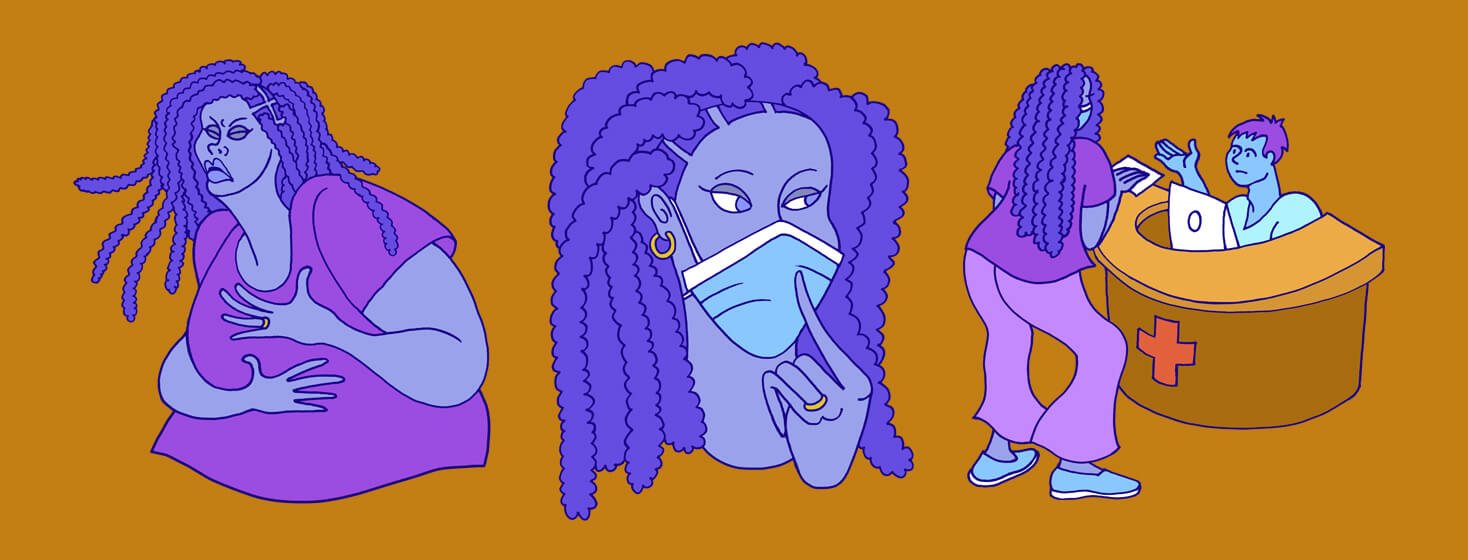Respiratory Infections 101
Respiratory infections affect the nose, sinuses, throat, and airways. These infections can cause symptoms such as congestion, cough, and shortness of breath.1
For people who live with certain chronic medical conditions, respiratory infections can be dangerous. If you have breathing problems or a health condition that impacts your lungs, protecting yourself from respiratory infections is crucial. Get to know the types, signs, and symptoms of respiratory infections so you can get treated right away.1-3
Types of respiratory infections
There are 2 main types of respiratory infections: upper and lower. Upper respiratory infections affect the sinuses and throat. This type of infection is very common. An example of an upper respiratory infection is the common cold.2
Lower respiratory infections affect the airways and lungs. These infections often are more serious and typically last longer than upper respiratory infections. An example of a lower respiratory infection is bronchitis. Bronchitis is inflammation of the lining inside your airway tubes (bronchioles).2,4
What causes respiratory infections?
Respiratory infections typically are caused by respiratory viruses. Some common viruses that can cause respiratory infections are:1,2,5
- Common cold
- COVID-19
- Influenza (flu)
- Respiratory syncytial virus (RSV)
Respiratory viruses can be spread from person to person in 2 ways:1
- Respiratory droplets in the air – when an infected person coughs or sneezes and another person breathes those germs in
- Physical contact – coming into close contact with others who are sick, or touching objects or surfaces with the virus on it and then touching your eyes, nose, or mouth
People can spread some respiratory viruses, such as the flu and COVID-19, before they show any signs or symptoms of infection.1
Symptoms of respiratory infections
The symptoms you may experience with a respiratory infection include:2
- Cough, with or without mucus (phlegm)
- Fever
- Runny nose
- Sore throat
- Hoarse voice
- Swollen lymph nodes
- Fatigue
At-risk people who get a respiratory infection may have certain complications. For example, if you have asthma, a respiratory infection can make your asthma symptoms worse. An infection can also trigger an asthma attack.1
Other complications may include:1-3
- Severe symptoms such as breathing problems, high fever, wheezing, and dizziness
- Bronchiolitis – inflammation in the small airways of the lungs
- Pneumonia – an infection that causes fluid to build up in the lungs
- Congestive heart failure – when the heart cannot pump enough blood and oxygen to the rest of the body
Who is most at risk of complications?
For most people, respiratory infections will clear up on their own with plenty of rest and fluids. But some people are at increased risk of health complications.1-3
Those who are most at risk of complications from a respiratory infection are:1-3
- Young children
- People with certain chronic health conditions, such as:
- Asthma
- Chronic obstructive pulmonary disease (COPD)
- Heart failure
- Type 2 diabetes
- Adults with weakened immune systems
- Adults over the age of 65
Diagnosing respiratory infections
Diagnosing a respiratory infection starts with a visit to your doctor. They will perform a physical exam to look at your nose, ears, and throat. They will also listen to your lungs.2
If your doctor suspects you have a lung infection, they may recommend additional tests, such as:2
- Chest X-ray
- Computed tomography (CT) scan
- Lung function test – measures how well your lungs are working
- Nasal swab
- Throat swab
- Sputum test – tests the phlegm that may be present in your lungs
Treating respiratory infections
Unfortunately, there is no specific treatment or medicine for respiratory infections caused by viruses. They usually will go away on their own. If your symptoms last longer than 2 weeks, contact your doctor.2
Because most respiratory infections are caused by viruses, antibiotics usually do not help. Antibiotics are effective only for infections caused by bacteria. Pneumococcus is an example of a bacteria that can cause respiratory infections. Infection with this bacteria can lead to serious illness like pneumonia or meningitis.2
Here are some ways to manage your symptoms if you have a respiratory infection:2
- Get plenty of rest
- Drink plenty of liquids to stay hydrated
- Take over-the-counter fever reducers and pain relievers, like ibuprofen and acetaminophen
- Continue to take medicines for your other health conditions, unless your doctor says otherwise
Preventing respiratory infections
Just as there is no single treatment, there is no single vaccine for respiratory infections. If you live with a chronic condition that increases your risk of a respiratory infection, take precautions so that you do not get sick.1,2
These everyday practices can help reduce your chances of an infection and spreading a virus to others:1,2
- Get vaccinated for COVID-19, the flu, and pneumococcal disease (and for RSV if a vaccine becomes available)
- Wear a mask when out in public and around large groups of people
- Wash your hands often, with soap and water, for at least 20 seconds
- Avoid touching your eyes, nose, and mouth with unwashed hands
- Avoid contact with others who are sick
- Stay at home if you feel sick
If you think you may have a respiratory infection, contact your doctor. They will advise you about the treatment plan that is right for you.1,2

Join the conversation